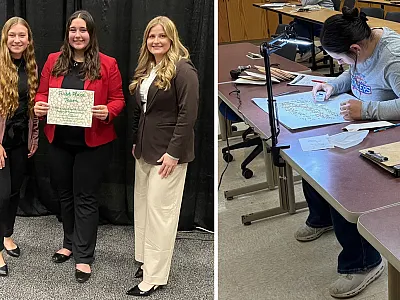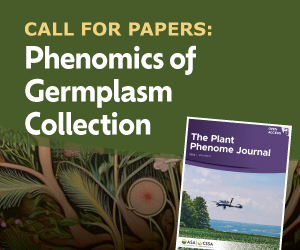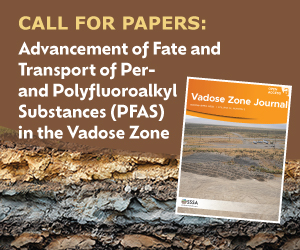Change Is Upon Us, and We Need to Adapt

Since our first days as undergraduates, we became familiar with the caricature of the grumpy professor who complains about “students today” and romanticizes how much better things used to be. I have a confession to make: I’m now becoming that grumpy professor complaining about change.
It is a bias I think we all have, innate in human nature to resist changes of systems and activities we have learned to navigate, especially when change is occurring outside of our control. Last semester was the first time teaching that I noticed my students were not talking to each other; they would arrive to class early and look at their devices without interacting unless I directed them to. Colleagues hypothesized that they were texting each other, but unfortunately, that was not the case. The students informed me that they were each passively consuming media (a lot of cat videos as I understand it) in their own private worlds.
This change for me is hard. We evolved and learned in the past by being social creatures, and I’m wholly unprepared for this new world in communication and interactions reaching the next generation of agricultural scientists. This is change outside of our control. This is change created by social media, scientifically engineered to become more addictive. This is also change created by COVID; the first experience teaching a generation of college students who missed their traditional junior and senior high school activities to participate in online learning. This is change outside of our control, yet it’s what we will increasingly need to work with.
Planning the Annual Meeting last year, the presidents‐elect looked for social media “influencers” in agronomy, crop science, or soil science. Sadly, there appeared to be few relevant to agricultural science, and most we identified seemed to focus on the message that GMOs are good and people who don’t like GMOs are wrong. Hardly an inspiring message. I think it will be hard to attract the best and the brightest if we are not reaching them on their own terms (apparently cat videos and “cringe”). Perhaps more surprising was how many members I talked with who outright dismissed the idea of a social media influencer as a speaker, equating this activity with poor science. I’m clearly not the only one struggling with change. This is change outside of our control, and I don’t like it, but we have to change if we want to maintain, let alone grow, our discipline and public awareness of it.
AI Is Here—Are We Ready?
If you are on social media or follow the academic news, you might have become aware of a number of artificial intelligence (AI) tools that have advanced to the point of being professionally useful. I have been thoroughly enjoying DALLE2 (https://openai.com/dall‐e‐2/), which can generate beautiful images to help communicate ideas for those of us not blessed with artistic talent. I’ve now used DALLE2 images in scientific presentations and teaching to great effect. It’s free to use and explore, and you really should try it if you haven’t. More recently, and most likely to create radical cultural change for us, is ChatGPT (https://chat.openai.com/). This tool, released in November 2022, has already reportedly been used by some to help write grant proposals, reports and manuscripts (research), essays (teaching), and even computer code!
ChatGPT (https://chat.openai.com/) has already reportedly been used by some to help write grant proposals, reports and manuscripts (research), essays (teaching), and even computer code! Photo courtesy of Adobe Stock/Ascannio.
On the research side, this will dramatically change what is possible and what skills are needed for career success. How will we evaluate “merit” if writing, and eventually even concepts, are not generated by the scientist themselves? If not here already, this day will come in the next year—are we prepared? On the teaching side, it will dramatically change what and how we teach, and as many professors are concerned, the nature of how we evaluate our students. In my teaching, I’ve generally tried to avoid evaluating “knowledge.” Knowledge is now ubiquitous when Google lets you access most of the knowledge in the world; synthesis and evaluation approaches in critical thinking were what I thought would allow students to succeed in their future jobs. Now if a student can simply prompt ChatGPT to “Write a paragraph on how AI can be combined with genomics to improve plant breeding” and get an output as shown in Box 1, it will be nearly impossible to evaluate comprehension, synthesis, or writing ability.
Box 1. When ChatGPT was prompted with “Write a paragraph on how AI can be combined with genomics to improve plant breeding,” it produced the following output:
Artificial Intelligence (AI) and genomics are two rapidly advancing fields that can be combined to greatly enhance the efficiency and effectiveness of plant breeding programs. By integrating AI algorithms with genomics data, researchers can develop predictive models that can quickly analyze large amounts of genetic information and make informed decisions about which plants are most likely to possess the desired traits. AI can also be used to automate the process of selecting plants for breeding, which can significantly reduce the time and resources required to make informed breeding decisions. Additionally, AI algorithms can be used to analyze large amounts of phenotypic data, such as plant growth and yield, to identify the genetic markers associated with these traits. This information can then be used to guide breeding programs, enabling breeders to make informed decisions about which plants to use in their breeding programs and achieve their goals of improving crops more quickly and efficiently. In this way, the integration of AI and genomics has the potential to revolutionize the field of plant breeding and greatly improve the efficiency of crop improvement efforts.
We can resist this change, as we are all inclined to; even ban it as some are proposing. But also recall, as students, many of us were told by teachers that we could not use calculators in exams because “we might not have them in the future.” For nearly the last decade, we’ve had the most powerful calculators we could need in our pockets on our phones, and brain power spent memorizing almost seems antiquated. To leverage similar changes from AI, we need to think about how we use these tools to solve the challenges our discipline is charged with and not simply dismiss them. Cautionary tales like Blockbuster’s dismissal of Netflix should remind us that technology can disrupt the way the world works. We need to be thoughtful regarding where our future efforts should be focused in training the next generation.
There are now around 200 articles published in ASA, CSSA, and SSSA journals that use or discuss AI tools specifically. Over the last five years, there have been more than 400 that have used or mentioned machine learning, one form of AI. It is exciting to see the first uses of deep learning tools for stress analysis (Nagasubramanian et al., 2022), computer vision for maize ear phenotyping (Gonzalez et al., 2022), and image‐based oat panicle phenotyping (Berro et al., 2022). The advances in genomic prediction have also only been possible with new machine‐learning tools (Barbosa et al., 2021), and they are now being powerfully used to characterize genomic diversity measures using more data (da Costa et al., 2022).
The power and ease of these new tools could help attract different types of students, including those less mathematically gifted. These tools will also require us to change; specifically, to change the focus of our teaching and statistical research to the universally important principles that matter and not specific methods or programs likely to disappear. What new opportunities could these tools create for our research? What new opportunities will these students have in their careers to transform agriculture? What do we need to give up? Change is always present, often difficult, but hopefully AI change can be positively transformative.
References
Barbosa, I.d.P., da Silva, M.J., da Costa, W.G., de Castro Sant’Anna, I., Nascimento, M., & Cruz, C.D. (2021). Genome‐enabled prediction through machine learning methods considering different levels of trait complexity. Crop Science, 61, 1890–1902. https://doi.org/10.1002/csc2.20488
Berro, I., Varela, J., & Gutierrez, L. (2022). An image‐based methodology to evaluate oat panicle architecture. Crop Science. https://doi.org/10.1002/csc2.20884
Costa, W.G., Valadares, C.B., da Silva Júnior, A.C., Arcanjo, E.S., de Almeida, H.C.F., Cruz, C.D., Carvalho, I.R., da Silva, J.A.G., Azevedo, C.F., Nascimento, M., & Nascimento, A.C.C. (2022). Genetic diversity and interaction between the maintainers of commercial soybean cultivars using self‐organizing maps. Crop Science, 62, 2233–2245. https://doi.org/10.1002/csc2.20816
Gonzalez, J.M., Ghosh, N., Colantonio, V., Pereira, F., Pinto, R.A., Wasson, C., Leach, K.A., Resende, M.F.R., & Resende, M.F.R. (2022). EarCV: An open‐source, computer vision package for maize ear phenotyping. The Plant Phenome Journal, 5, e20055. https://doi.org/10.1002/ppj2.20055
Nagasubramanian, K, Singh, A., Singh, A., Sarkar, S., & Ganapathysubramanian, B. (2022). Plant phenotyping with limited annotation: Doing more with less. The Plant Phenome Journal, 5, e20051. https://doi.org/10.1002/ppj2.20051
Text © . The authors. CC BY-NC-ND 4.0. Except where otherwise noted, images are subject to copyright. Any reuse without express permission from the copyright owner is prohibited.











